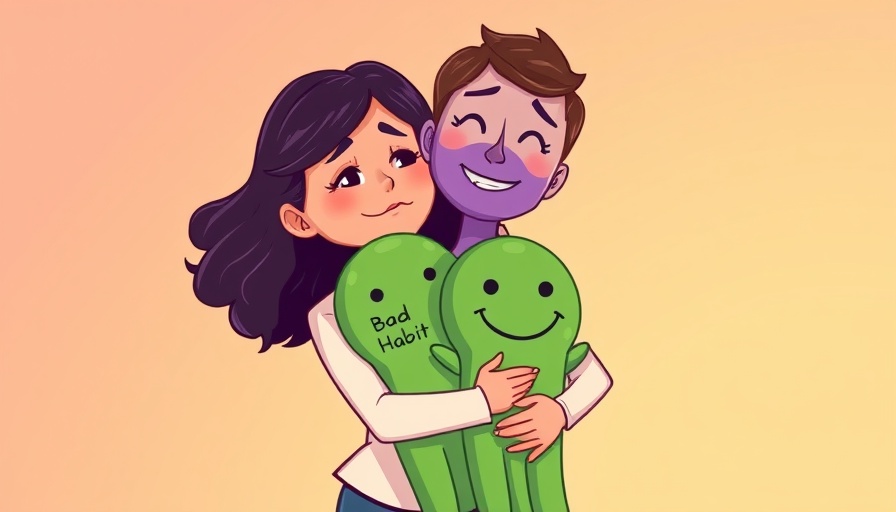
Understanding the Nature of Bad Habits
Many of us grapple with bad habits that seem to infiltrate our daily lives unnoticed. Whether it’s scrolling through social media during meals or snacking on unhealthy foods, these behaviors can make us feel out of control. However, it’s important to understand that struggling with habits is a common experience.
These habits often serve a purpose—whether it’s fulfilling a need for connection, stress relief, or simply boredom. By recognizing that our habits can be tied to deeper emotional states, we can begin to address them with compassion, rather than judgment.
The Flawed Approach of Resistance
When faced with bad habits, many people believe that willpower is the key to change. We tend to reinforce our habits by declaring, "I must stop this now!" However, such rigidity often leads to an "extinction burst," where the urge to engage in the habit becomes overwhelming, as if the body is celebrating being 'deprived'. This pattern can lead to feelings of failure when we inevitably fall back into those behaviors.
Instead of labeling ourselves as failures, it’s essential to shift that narrative. Adopting a mindset of acceptance allows us to recognize our habits without judgment or shame. This approach can alleviate anxiety and pave the way for real change.
Practical Steps to Accepting and Changing Your Habits
Transitioning from a critical mindset to one of acceptance requires practice and patience. Here are several steps to help you accept your bad habits and work towards understanding them:
- Create Space for Observation: Start by observing when and why you engage in your bad habits. For example, journaling can help you track emotional triggers associated with your habits. When you realize that boredom, stress, or loneliness prompts your behavior, you can acknowledge those feelings without acting on the habit.
- Change the Narrative: Instead of using harsh language with yourself, try to be gentler. For example, instead of saying, "Don’t use your phone now," remind yourself of the reason you want to set it aside. This acknowledgment doesn’t eliminate your urge but it respects it.
Benefits of Acceptance: A Mindful Transition
Acceptance not only cultivates self-compassion but also provides a more mindfulness-driven path toward change. With this approach, you’re not fighting against your impulses, but rather exploring the motivations behind them.
Mindfulness techniques can enhance this process. Through practices like meditation or focused breathing, you can create emotional distance from your habits and observe them from a compassionate angle, where you allow the thoughts and urges to pass without judgment.
Future Directions: Steps for a Balanced Life
As you navigate this journey, look for practical opportunities to build a lifestyle that reflects your goals for mental balance. Consider replacing your bad habits with new, healthier practices that fulfill the same needs. For instance, if you notice you tend to scroll when bored, try picking up a book or going for a walk instead.
Further, creating a supportive environment can enhance your efforts. Removing temptations from your surroundings—like keeping junk food out of the pantry—can help reinforce your intention to change without the constant battle against cravings.
Embracing Community Support: You Are Not Alone
Bad habits can often feel isolating, but connecting with others helps normalize the struggle. Whether through support groups, discussions with friends, or online communities, sharing your experiences can provide encouragement and accountability.
It’s also invaluable to learn from others’ journeys; often, people have insights that can resonate deeply with your own experiences and challenges.
Taking Action: Cultivating a Healthier Lifestyle
Now is the time to embrace this new approach to habits. By acknowledging and accepting them, you cultivate an environment where change can flourish. You will not only understand your habits better but also develop healthier alternatives that support a more balanced and fulfilling life.
Your habits shape your life—start today to ensure they reflect the person you want to be.
 Add Row
Add Row  Add
Add 




Write A Comment